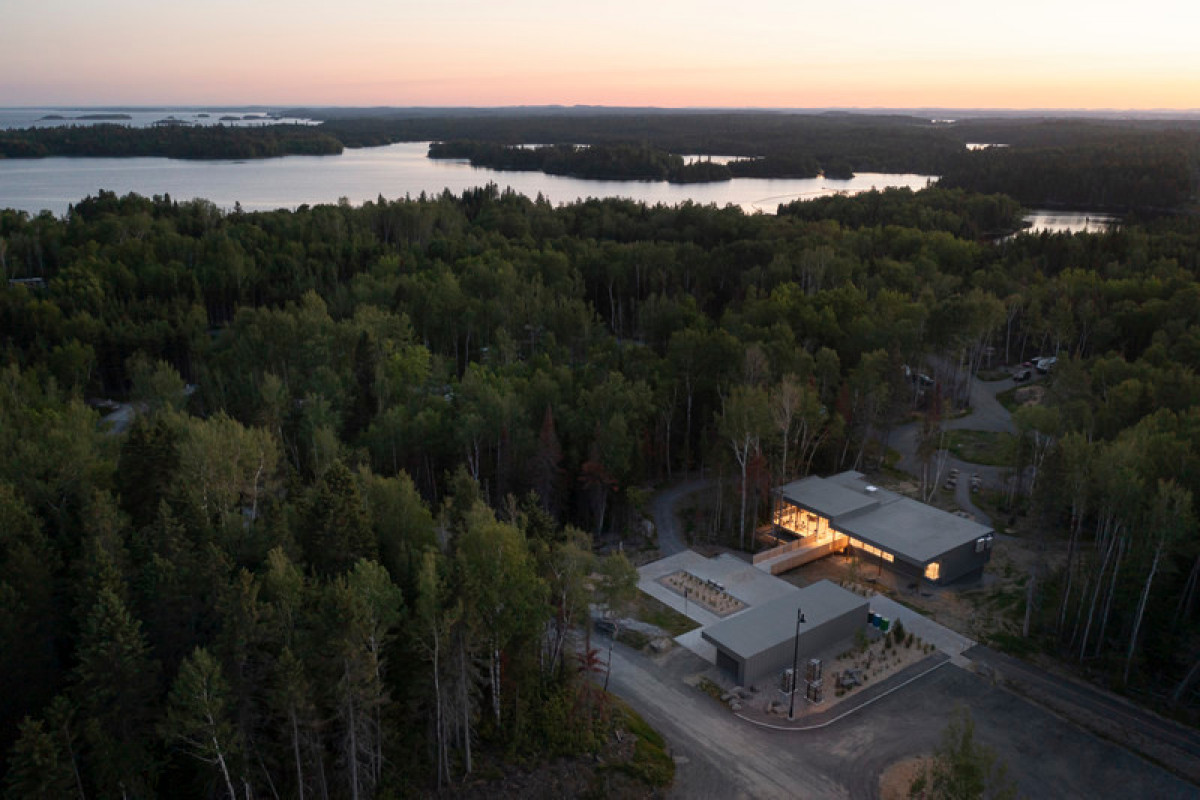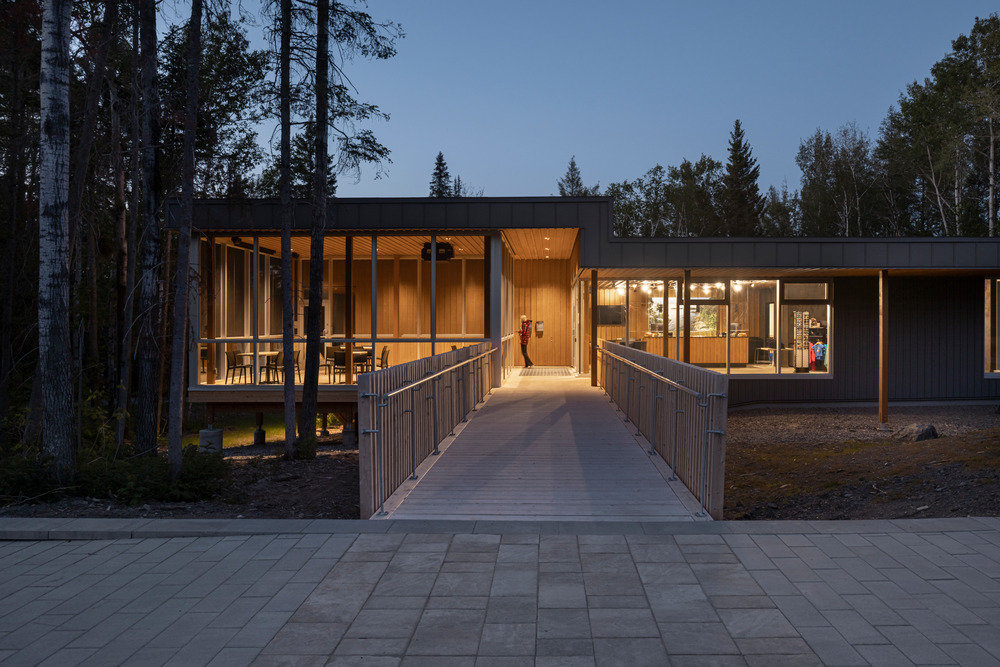11 May 2022

Architects have a determining responsibility when it comes to building upon the natural environment. From the beginning, the opportunity to magnify a unique and majestic territory was the motivation driving the mission of the Société des Établissements de Plein Air du Québec (SÉPAQ):
«…to develop the territories and public assets entrusted to it;
…to ensure sustainability for the benefit of its clientele, the regions of Quebec, and future generations;
...to connect people to nature. »1

The Tow Camp dates back to the time when the mouth of the Saguenay River, formed by the islands of Lac-Saint-Jean, was used as a towing station for logs being redirected to the small wood lump. Thus the boom, an emblematic structure formerly used for log driving and logging, forms the backbone of the project. It is a common thread that traces links with history while creating a springboard to the new resort vocation of the Camp de Touage sector of Pointe-Taillon National Park.
Beyond the poetics and the form of the object, architectural notions have emerged from references to the boom. The concepts of the protective screen, footbridge, observation point, light filter, and expression of the structure are all avenues of development that have led to a sober and coherent architectural party that meets the technical and functional considerations of the reception pavilion for the benefit of its users' experiences.
Also Read: How to Design a Perfect Kitchen
The Camp de Touage Service Center combines a coherent and poetic architectural resolution with its natural environment. In direct relation to the mission of promoting the resort and the general public vocation of the SÉPAQ, it evokes territorial and historical references related to the log drive and forestry, integrates the route of the Vélo route des Bleuets, and favours the discovery of the site in an enveloping wooden case by all visitors to the region.
Also Read: High End Office Interiors At New Delhi
1. Extract from the mission statement of the Société des Établissements de Plein Air du Québec (SÉPAQ) - Strategic Plan 2017-2022
Technical sheet
Project name
Camp-de-Touage Service Center, Pointe-Taillon National Park
Location
40 Chemin du Golf, Saint-Gédéon, QC, G0W 2P0
Start date
May 21, 2021
Name of the client
Société des établissements de plein air du Québec (SÉPAQ)
Project manager
Annie Lalancette, architect | Éric Painchaud architecte
Architect name
Blouin Tardif Architectes | Éric Painchaud architecte in consortium
List of people who participated in the project
List of professionals and consultants who worked on the project
Photo credits
Stéphane Groleau, photography